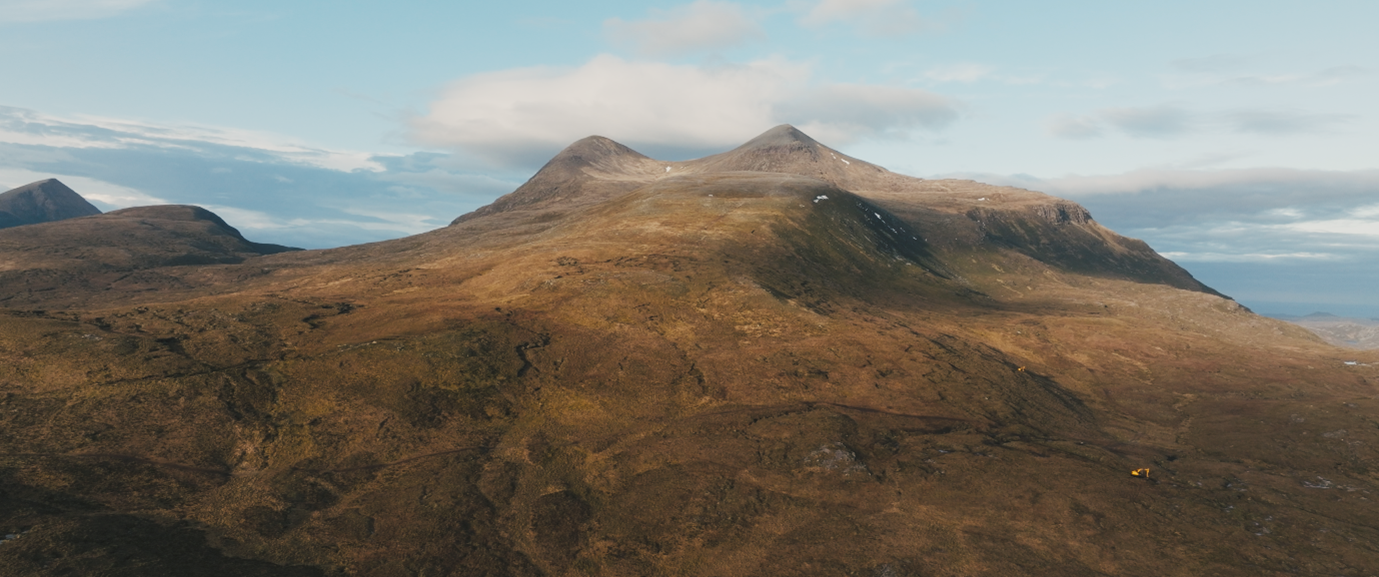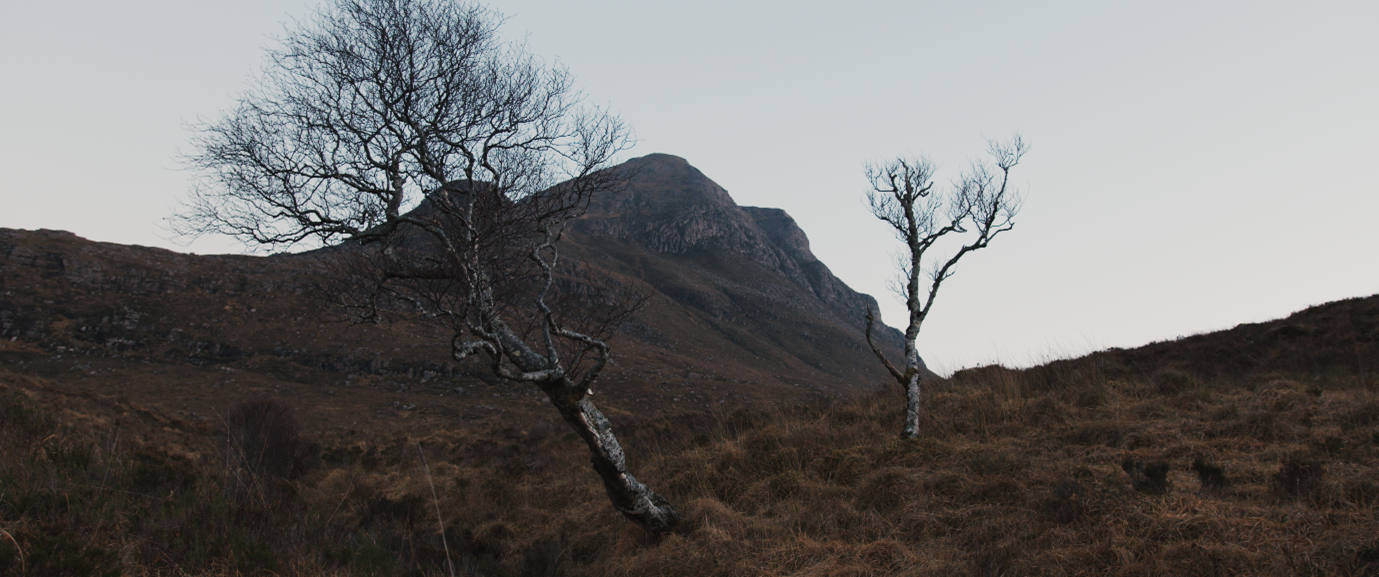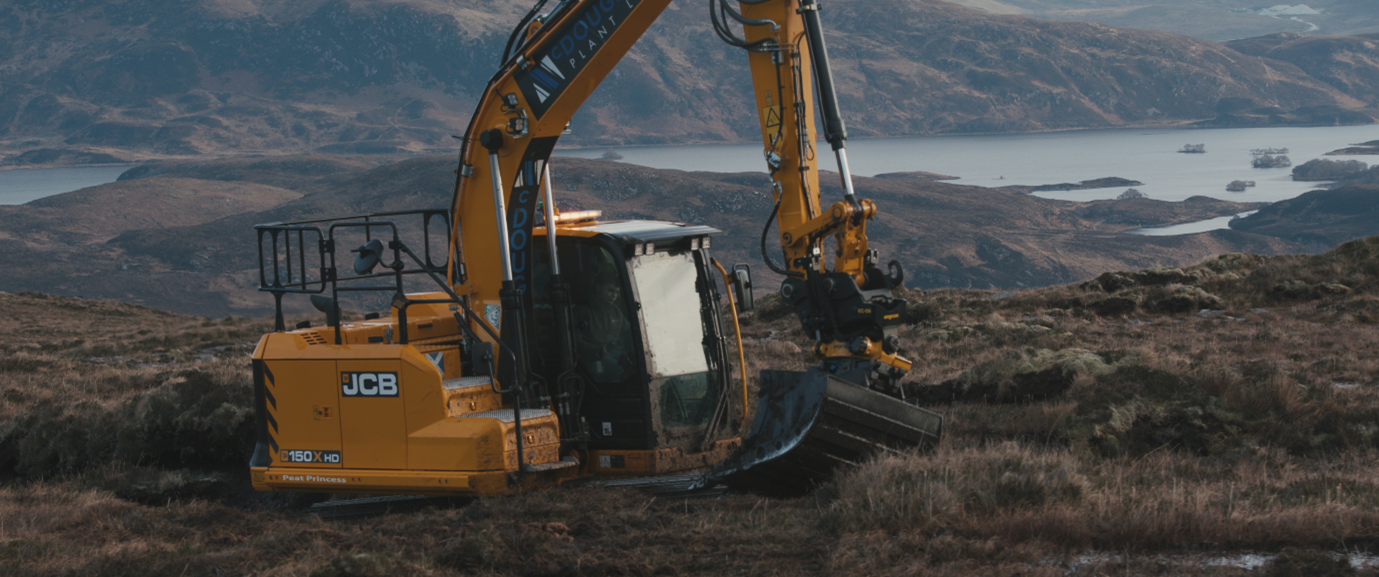Forest Carbon are delighted to be supporting the Assynt Foundation on the restoration of a 91 hectare peatland restoration project at Cùl Mòr.

Assynt Foundation was set up to make a community buy out of the Glencanisp and Drumrunie Estates in Assynt in the North West Highlands of Scotland. It achieved this in 2005, by raising funding from the likes of the Scottish Land Fund/Big Lottery Fund and Highlands & Islands Enterprise. This buy out was the first major landholding purchase under the community buy-out provisions of the Land Reform (Scotland) Act 2003 and is the fourth biggest buy out in Scotland in terms of land area. The two estates combined amount to around 18,000 hectares (44,000 acres) of land and include much of Assynt and Coigach's distinctive inselberg landscape, including the iconic mountains of Suilven, Canisp, Cùl Mòr. and Cul Beag.

The aim of the Assynt Foundation is to deliver conservation management across the estates to enrich biodiversity and enhance the experience of visitors to this unique part of Scotland. Since taking on ownership of the estates, the Assynt Foundation has been working to improve the condition of habitats through the management of deer, woodland establishment and other work.
The peatland restoration project at Cùl Mòr aims to restore extensive areas of actively eroding and bare peat. The principle aims are to prevent further erosion of the peatland, increase the sites ability to store water and to enhance the growth of sphagnum mosses. Restoration work commenced in February 2023 and it is expected to take 6 – 8 weeks to complete.
In the region of 11 kms of peat hags will be reprofiled across the site. This involves rolling back (or undermining) the vegetation on top of the hag for about 2 metres then, removing the exposed peat and re-profiling the hag to achieve a slope angle between 33° - 45° from the top of the hag to the base. After this, the vegetation (turves) will be replaced to cover the new slope. If required, further vegetation can be taken from shallow borrow pits to fill any gaps.

The hags will then be compacted to ensure that the entire slope is covered and the vegetation surrounding any borrow pits that were created will be stretched to cover the peat and ensure no areas of bare, exposed peat remain. As well as hag re-profiling, approximately 2kms of eroding gully will be blocked with peat bunds. Available stone may also be used in places to create leaky dams that slow the flow of water at key points across the site.
Research has identified that improvements to peatlands that have suffered from drainage, erosion or burning would be beneficial to society. The research has put a monetary value on the societal benefits of restoration, which includes reduction of greenhouse gas emissions, increased water quality, and improved wildlife habitat.
According to the research published in 2021, restoring Scotland’s peatland sooner would have significant economic gains: restoring 10% of degraded peatland to “good” condition would be worth £65.03 per household a year; a 20% increase would rise to £111.68; 30% to £139.93; and 40% to £149.8. [1]
Forest Carbon is helping Assynt Foundation with certifying the project under the IUCN Peatland Code.
Later this year Forest Carbon will be giving Carbon Club members the opportunity to support Assynt Foundation in the restoration and longer-term management of the project.
[1] “The opportunity cost of delaying climate action: Peatland restoration and resilience to climate change” is published in Global Environmental Change, September 2021. DOI: 10.1016/j.gloenvcha.2021.102323

/public/681/32b/29b/68132b29b87b9609208383.jpg)
/public/67e/569/9f4/67e5699f42331705368466.jpg)
/public/679/c84/bcf/679c84bcf3224958888954.jpg)